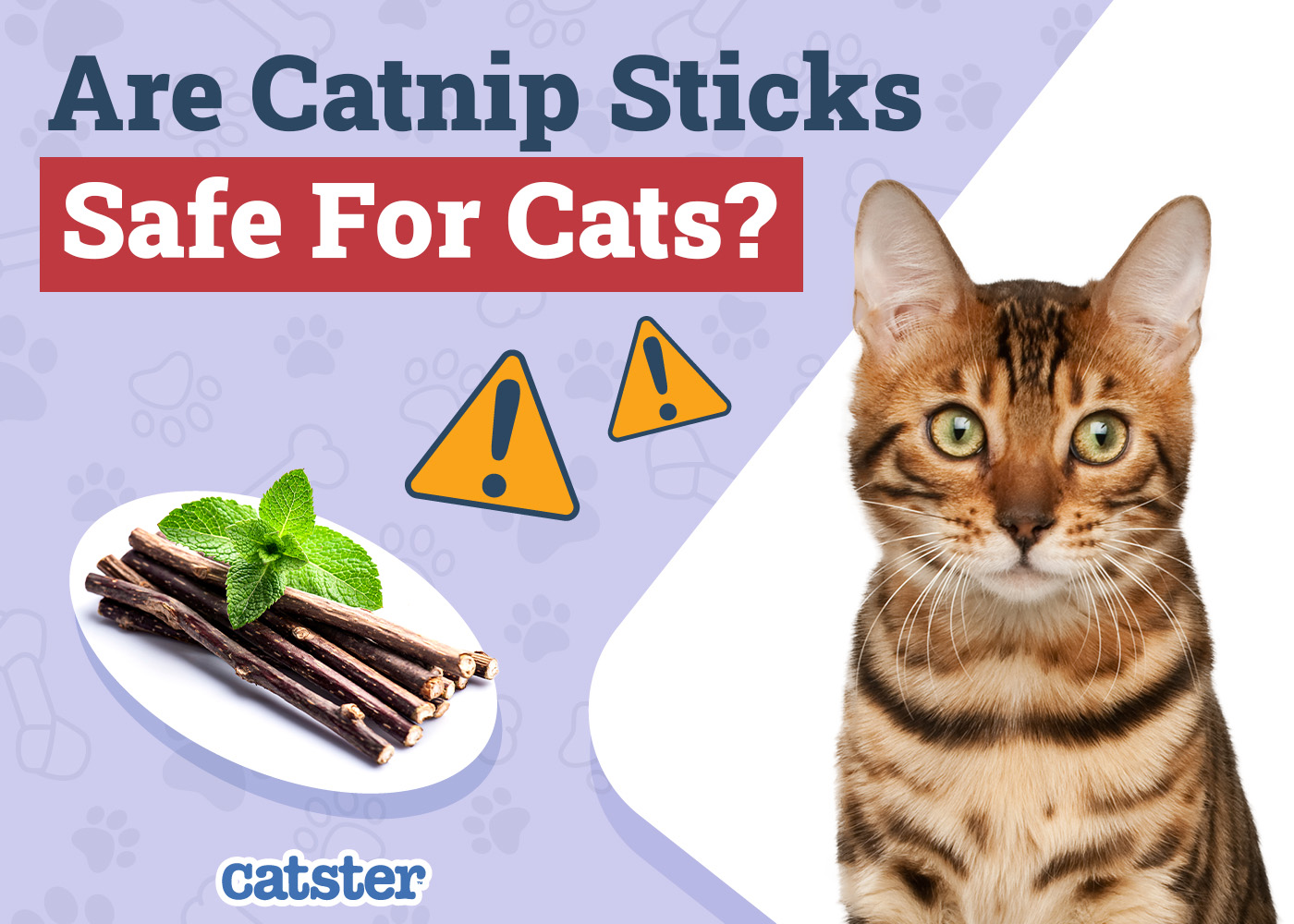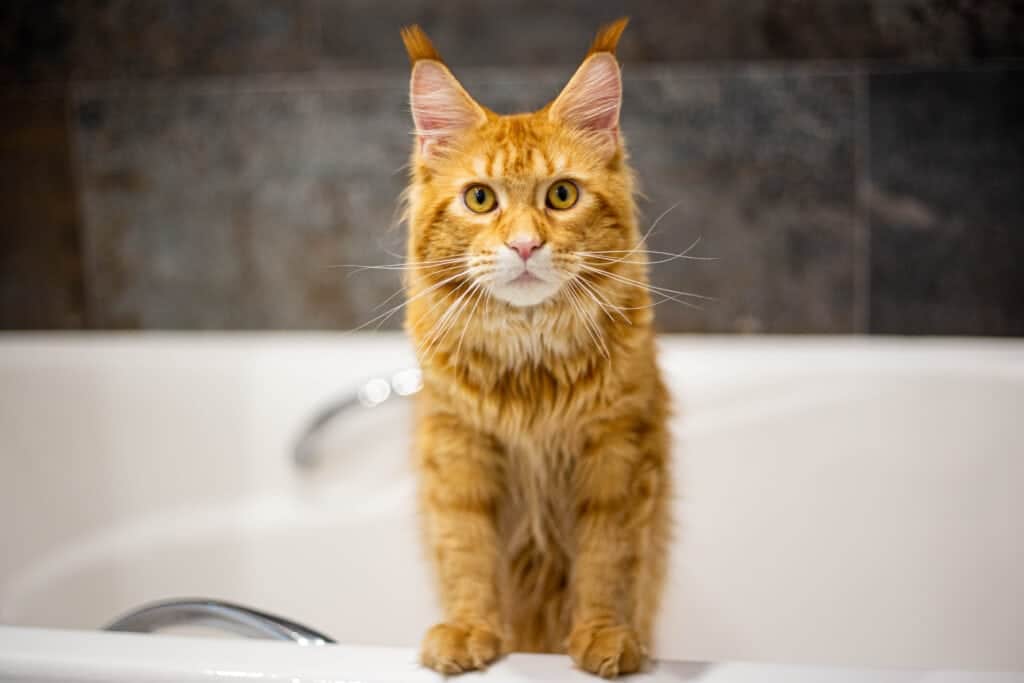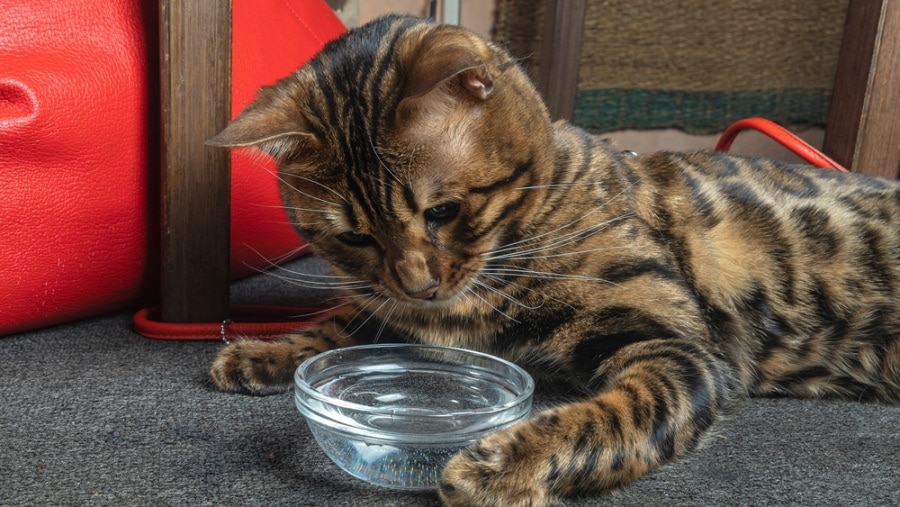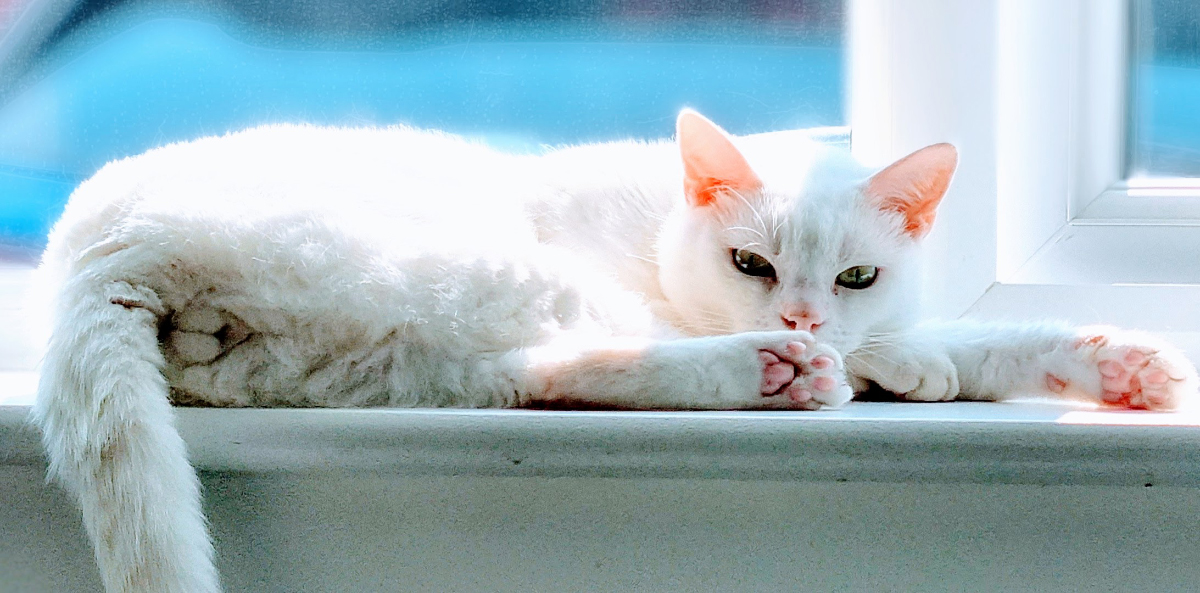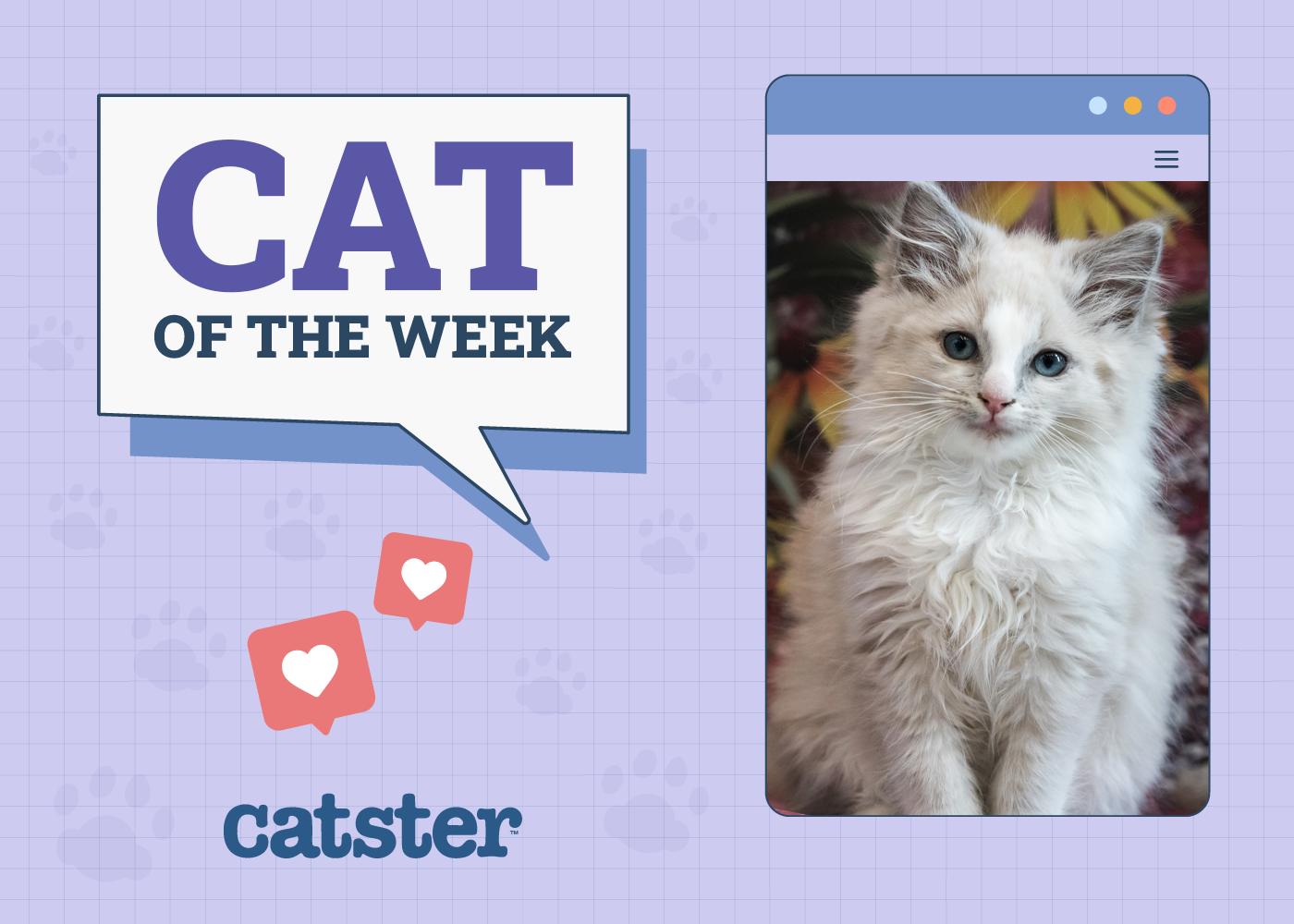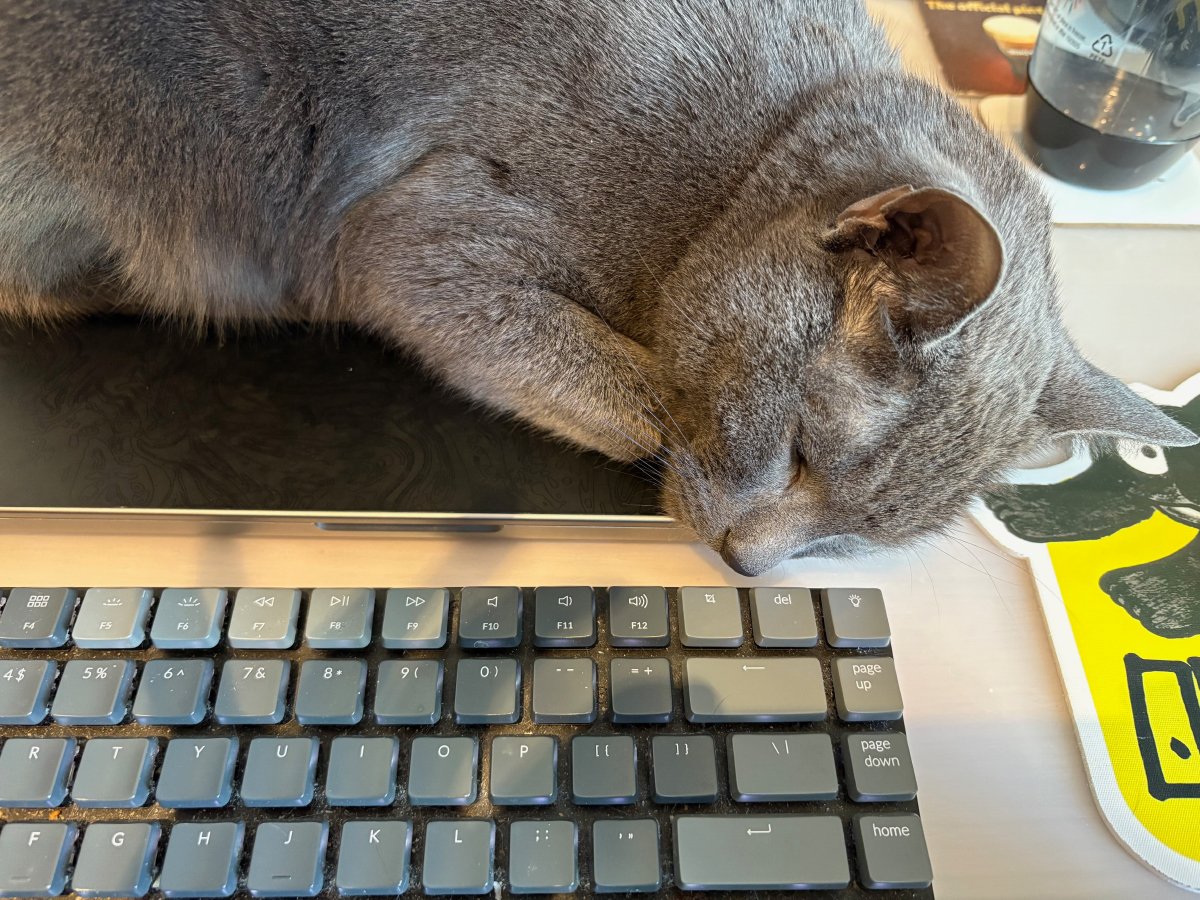Click to Skip Ahead
Catnip is a minty herb that has light-green foliage and lavender-colored flowers. Catnip has unique effects on many cats, and while some become affectionate and playful, others become more vocal, start drooling or relax, and may develop dilated pupils. These effects are short-lived and wear out in 10 to 15 minutes. One in three cats will not have any reaction to catnip.
The sticks from the plant contain an active compound called nepetalactone. If your cat goes crazy over catnip sticks, they are attracted to this compound. Besides actual catnip, many of the catnip sticks are actually made from silvervine stems, which is a great alternative for cats who do not respond to catnip. But is it safe for your feline friend to chew catnip and silvervine sticks?
Yes! Catnip and silvervine sticks are non-toxic, and chewing them with supervision may temporarily affect the cat’s behavior and mood. Your feline may have a sudden burst of energy and seem very excited, content, or relaxed.
If you want to give your feline buddy a taste of catnip sticks, it is natural to wonder whether this could do them any harm. Here is in-depth information about catnip sticks to help you decide whether buying this treat for your pet is worth it.

What Are Catnip Sticks?
Catnip is a plant loved by many domestic and big cats like lions. This minty herb produces nepetalactone in bulbs or glands you cannot see with the naked eye.1 These fragile bulbs containing nepetalactone can be found on the catnip plant’s stems, leaves, and seed pods. One in three cats does not respond to catnip, while 75% of those cats actually respond to silvervine.2
The catnip herb, as well as silvervine, produces different active compounds, with silvervine containing actinidine, iridomyrmecin, and isodihydronepetalactone, while cis-trans nepetalactone is predominant in catnip.
Your feline friend faces no health risk when they chew on catnip or silvervine sticks, as long as they don’t swallow any larger pieces, which could lead to throat damage, choking, or gastrointestinal obstruction.
Lots of cats go bananas for catnip. If your cat is one of them, we recommend Hepper's durable, engaging Catnip Stick Toy! These sturdy toys come in several fun colors and feature bite-proof double bagging and 100% organic catnip fill. They're also handmade in the USA and designed to look like your cat's natural prey.
At Catster, we’ve admired Hepper for many years and decided to take a controlling ownership interest so that we could benefit from the outstanding designs of this cool cat company!
Why Cats Find Chewing Catnip Sticks Pleasurable
Most cats love catnip and silvervine sticks because of the active ingredients that provide them with a positive olfactory enrichment experience. When they chew or brush against catnip, the fragile microscopic bulbs break to release the chemical that stimulates their sensory neurons, making cats respond with a burst of energy and excitement. Some cats also act like they are in heat by rolling on their back, vocalizing more, shaking their head, licking, chewing, and rubbing against the catnip. Nepetalactone mimics sex pheromones of aphid insects in an attempt to repel them from the plant.3
Nepetalactone and compounds from silvervine can also make some cats feel more relaxed and sleepy. It can be useful for managing anxiety, stress, and sometimes feline aggression. In rare cases, this chemical intended to stimulate the brain’s happy receptors can cause overstimulation or even aggressive behavior. If your furry buddy gets aggressive, don’t provide more catnip.
Estimated Duration of Catnip High
The effects of catnip kick in almost instantly but are only short-lived. Most cats only enjoy a high for 10 to 15 minutes. A 10-minute high is often enough because most pet parents use catnip sticks during play sessions or to help their feline friends cope with stress or anxiety.
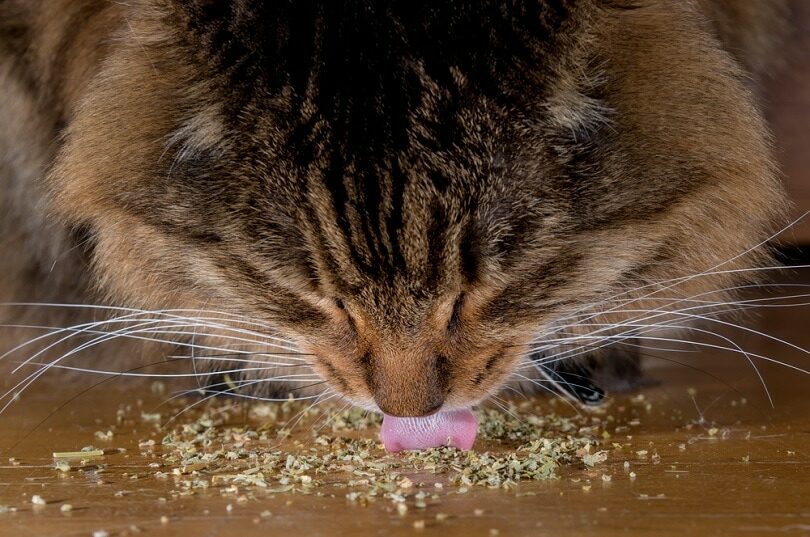
About 65% of felines respond to catnip, while around 35 % show no reaction. Sensitivity to catnip is an inherited trait, so there is no cause for alarm if your cat shows no response to the plant. You could try other alternatives that trigger the brain’s happy receptors, like Silvervine, as 80% of cats respond to it.
Kittens typically don’t react to catnip until they are 3–6 months old. They could seem playful, but their mood will not hinge on catnip sensitivity.
Is It Safe to Give My Cat Catnip Sticks Daily?
Catnip sticks are non-toxic and safe for felines when given in moderation and under supervision. While giving your furball some catnip sticks daily during your training or play sessions will not cause any adverse effects, professionals recommend only providing the treats once or twice weekly.
And do not worry about cats getting addicted. Most cats go bonkers over catnip sticks. However, the notion that the treats are addictive is misplaced. Catnip isn’t addictive; it only provides a temporary feeling of euphoria.
Cats should always be supervised while chewing catnip and silvervine sticks for several reasons. One of them is if the sticks become sharp and the cat manages to chew off bits, this can cause damage to their mouth, gums, and teeth, as well as the back of the throat. Larger pieces can pose a choking hazard, because some cats may try to swallow chewed-up pieces, which can lead to gastrointestinal blockage.
If you’re unsure about giving catnip sticks to your cat, you can check with your veterinarian first.
If you need to speak with a vet but can't get to one, head over to PangoVet. It's an online service where you can talk to a vet online and get the advice you need for your pet — all at an affordable price!
Catnip Sticks for Kittens: What to Know
If you have kittens older than 6-8 months, it is safe to give them catnip sticks in moderation. There’s nothing like “underage consumption,” and you can provide catnip to kittens during supervised playtime or to help them relax.
Again, the high is only short-lived, and your kitties may respond by turning into little playful furballs. If your kitties look bored, a small dose of catnip can jack up their energy during play sessions or training routines. Some kittens won’t react to catnip until they are older than 8 months, while for most this is from 3-6 months of age.
You can also use catnip to redirect behavior. For instance, if your cat likes scratching your carpet or furniture, sprinkling catnip on the scratching post can help. The aroma from the plant will serve as a powerful attractant, and your cat will suddenly not get enough of their scratching post!

Frequently Asked Questions (FAQ)
Chewing catnip sticks elevates the mood of most cats and throws them into a state of hyperactivity or blissful calm. Here are some frequently asked questions about catnip stick treats and their euphoric effects.
Are Catnip Sticks Beneficial to Felines?

Catnip sticks are special treats you can use to provide olfactory enrichment, and even encourage your furball to relax, play or exercise. These sticks may also help with maintaining good dental hygiene. Most importantly, catnip sticks can be a valuable tool in managing stress and anxiety. For instance, the treats can make your cat have an easier time adjusting to a new environment right after a move.
Fresh vs Dry Catnip Sticks: Which Option Is Better?
Fresh catnip sticks give a more intense effect than dried sticks. However, most cats prefer dried sticks over fresh ones. It is best to monitor your cat’s reaction to both options to understand their preferences better. Also, ensure you store your sticks in an airtight container to keep the nepetalactone potent.
Does My Cat Need Monitoring After Giving Catnip Sticks?
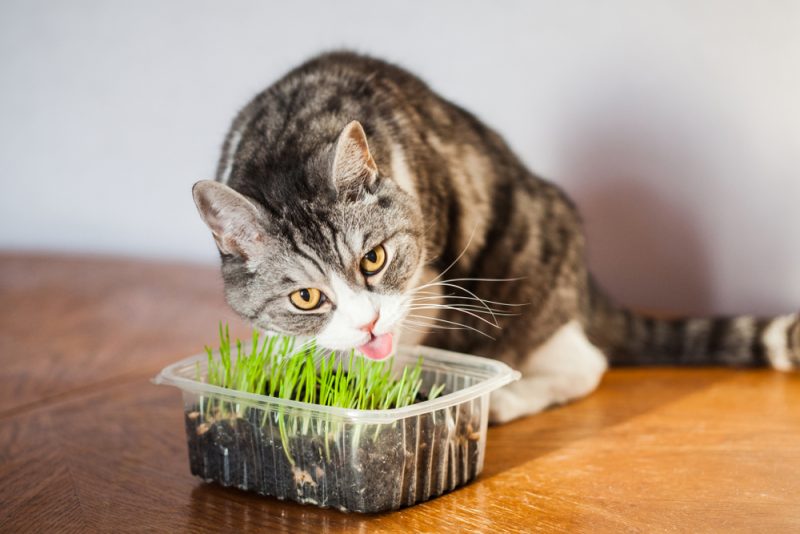
Your cat will need monitoring, especially if you offer catnip stick treats for the first time. The effects of nepetalactone are unpredictable, and while some cats drool and sleep, others become more playful, overstimulated or borderline aggressive. If your feline turns mischievous under the influence of catnip, you should not offer the treats in the future to avoid amplifying the aggression.
Supervising is also crucial to ensure your cat does not damage their mouth or throat while chewing, and does not attempt to swallow any big pieces. Worn-out sticks should be replaced.
Will a Catnip Overdose Kill My Cat?
Catnip sticks are not harmful if offered in moderation and under supervision, generally meaning your cat can chew them without any cause for alarm, as long as they don’t try to swallow larger pieces. However, excessive consumption of catnip can cause adverse signs like nausea, vomiting, and diarrhea, as described by the ASPCA. Although these signs are often transient, some cats may continue vomiting and will need to see the vet. Always start with a very small amount of catnip and monitor your cat’s response to it.

Final Thoughts
Most cats enjoy an intense catnip experience and go nuts with each sniff of nepetalactone. This compound triggers a happy feeling and encourages playful behavior in around 65% of cats, while 80% of them respond to silvervine. Even your lazy couch potato could suddenly switch to playful mode.
Arguably, catnip sticks can help your cat maintain a healthy enriched lifestyle when offered in moderation and under supervision. Catnip stick treats can help with dental hygiene while also making felines feel relaxed and happy!
- See Also: Best Matabi Silvervine Chew Sticks
Featured Image Credit: Lermont51, Shutterstock

